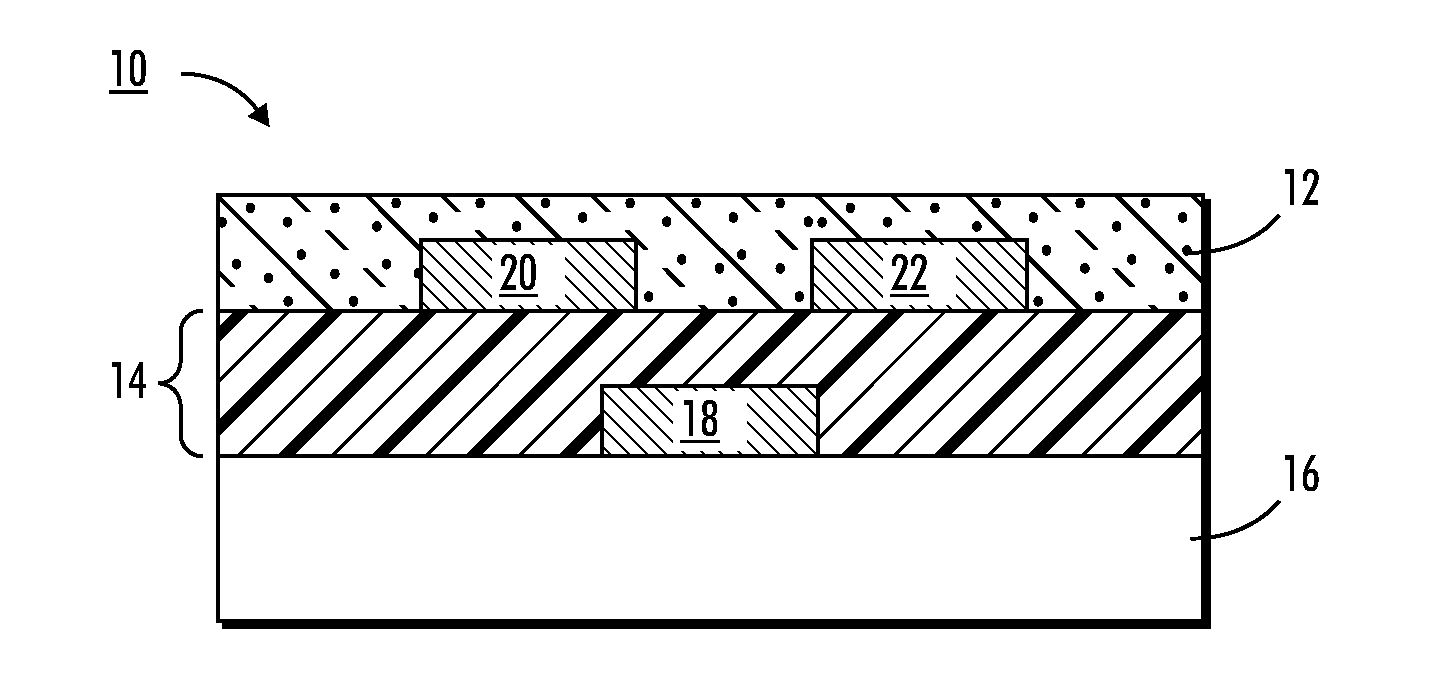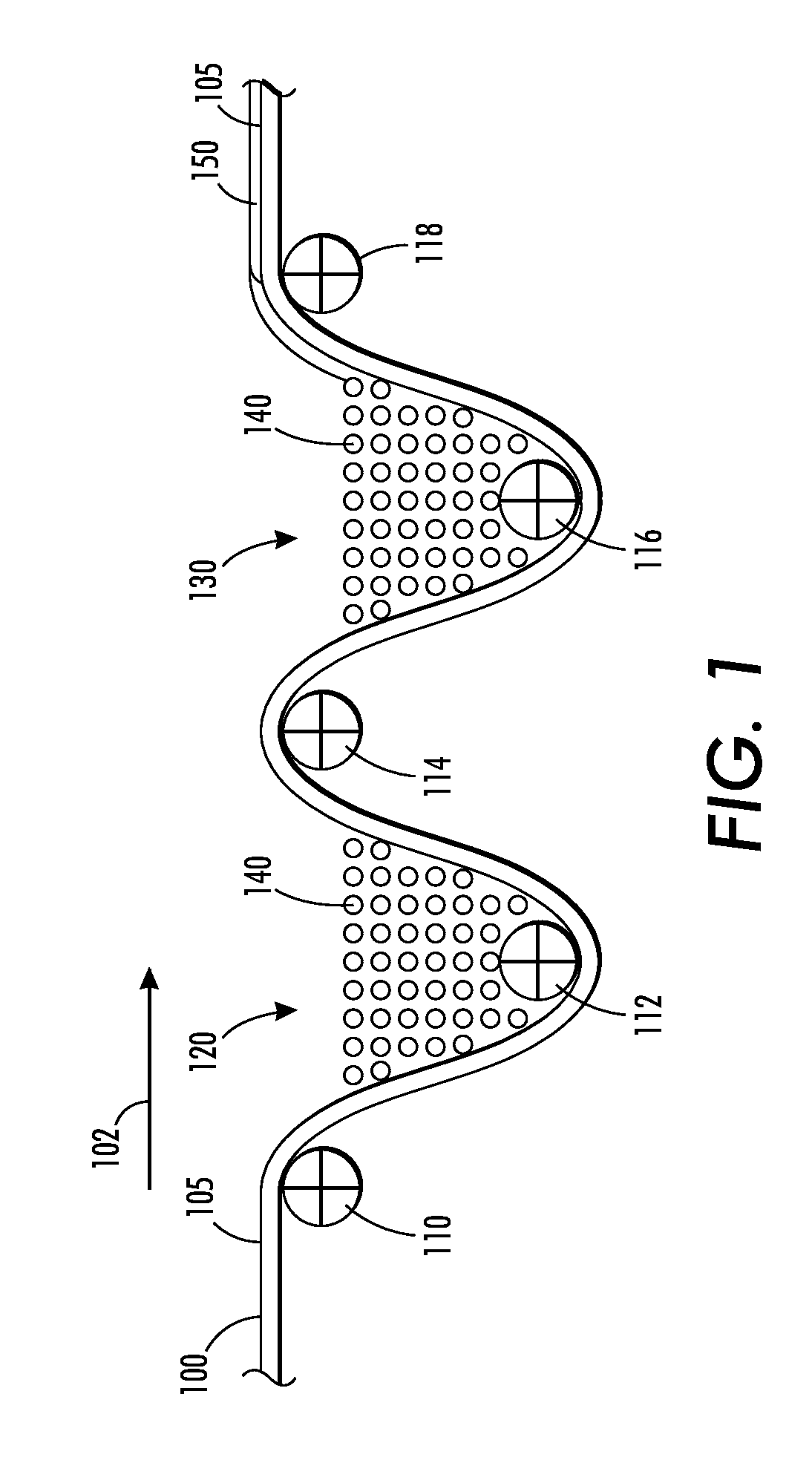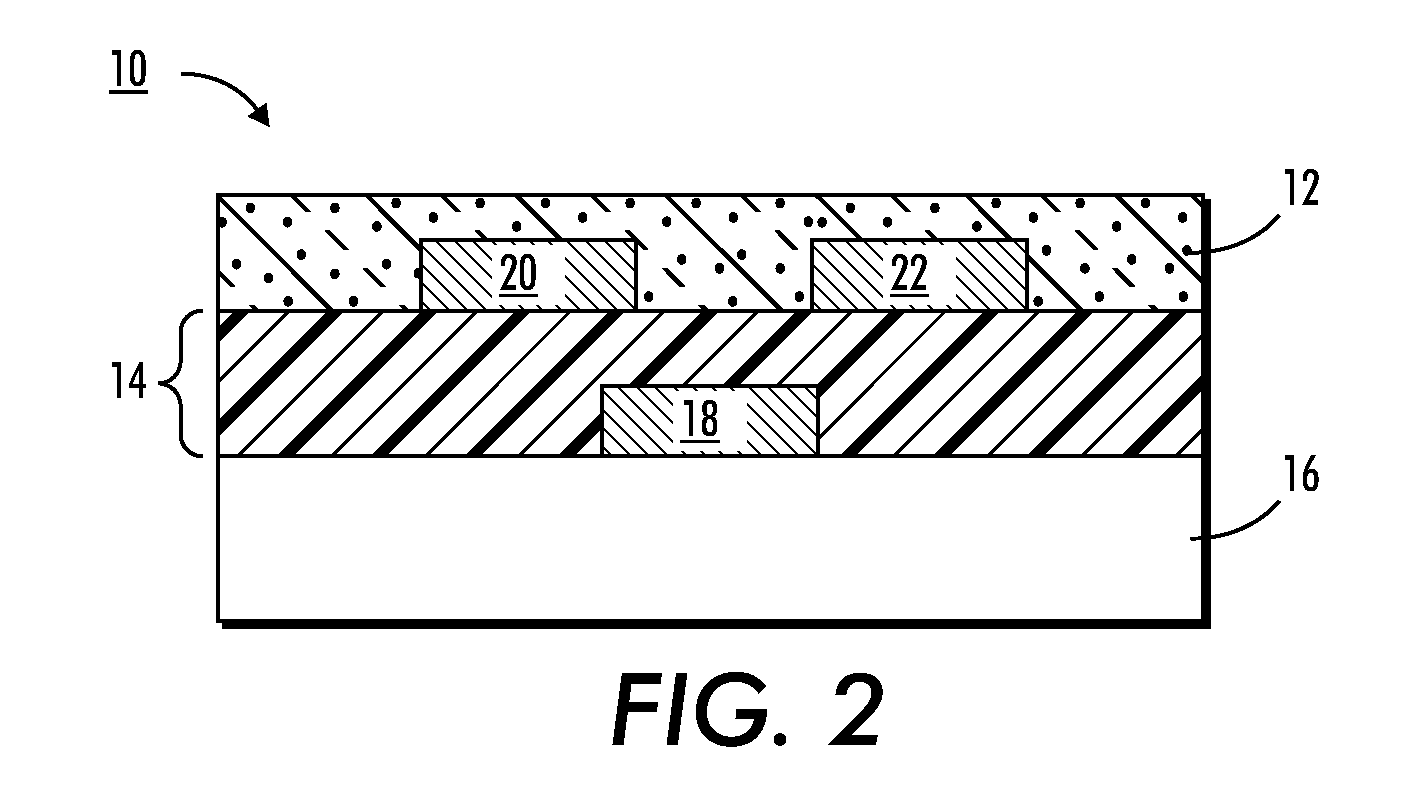Substrates with conductive coatings
a technology of conductive coatings and substrates, applied in the field of substrates with conductive coatings, can solve the problems of increasing the cost of this procedure, difficult and expensive uniform film, complicated procedure, etc., and achieve excellent electronic, thermal and mechanical properties
- Summary
- Abstract
- Description
- Claims
- Application Information
AI Technical Summary
Benefits of technology
Problems solved by technology
Method used
Image
Examples
example 1
[0082]0.1 grams of graphite flakes (from Sigma-Aldrich) were mixed with 4.0 grams of glass beads. The glass beads had a diameter of about 1 millimeter. The mixture was shaken for 30 minutes. After the mixture was shaken, the surface of the beads became black, indicating that the beads were coated with graphene and nanoplate graphite.
[0083]One side of a polyethylene terephthalate (PET) substrate was covered with Scotch tape. The substrate was placed in contact with the glass bead mixture and shaken for 30 minutes. After shaking, the uncovered surface of the PET substrate and the Scotch tape were covered with graphene and nanoplate graphite. Each surface of the substrate became highly conductive. The resistance of the Scotch tape side was measured using a two-probe ohm meter at 150 ohms for a length of about 5 cm and the resistance of the PET film was measured at 1,500 ohms for a length of about 5 cm. As a point of reference, a similar resistance measurement for indium-tin oxide (ITO)...
example 2
[0089]0.2 grams of natural graphite was placed in a 60 milliliter bottle. Metal shots (from Hoover Precision Product) having a diameter of one-eighth of an inch were added to fill half of the volume of the bottle. The mixture was milled on a milling machine for 3 hours. The metal shots became black, indicating that the surfaces of the shots were coated with graphene and nanoplate graphite.
[0090]Approximately 20 of the coated metal shots were removed and transferred to a second bottle. Fresh, i.e. clean, metal shots were added to the second bottle until half the volume of the bottle was filled. The mixture of the second bottle was milled for 30 minutes. All of the metal shots became black.
[0091]A PET substrate was inserted into the second bottle which was then shaken for 10 minutes, resulting in a smooth, shiny graphite / nanoplate graphene coating on both sides of the PET substrate. The surface conductivity of the coating was measured to be similar to the conductivity measured in Exam...
example 3
[0093]0.2 grams of graphite flakes (from Sigma-Aldrich) were mixed with 40.0 grams of glass beads. The glass beads had a diameter of about 1 millimeter. The mixture was shaken for 5 minutes using a Resodyn™ Acoustic Mixer (LabRAM Mixer). The surface of the beads became black immediately, indicating that the beads were coated with graphene and nanoplate graphite. A piece of PET substrate (2 centimeters by 5 centimeters) was immersed in the coated beads, and the container with the PET was allowed to shake in the LabRAM Mixer for 5 minutes, resulting in a smooth, shiny graphite / nanoplate graphene coating on both sides of the PET substrate.
PUM
| Property | Measurement | Unit |
|---|---|---|
| Thickness | aaaaa | aaaaa |
| Thickness | aaaaa | aaaaa |
| Electrical conductivity | aaaaa | aaaaa |
Abstract
Description
Claims
Application Information
 Login to View More
Login to View More - R&D
- Intellectual Property
- Life Sciences
- Materials
- Tech Scout
- Unparalleled Data Quality
- Higher Quality Content
- 60% Fewer Hallucinations
Browse by: Latest US Patents, China's latest patents, Technical Efficacy Thesaurus, Application Domain, Technology Topic, Popular Technical Reports.
© 2025 PatSnap. All rights reserved.Legal|Privacy policy|Modern Slavery Act Transparency Statement|Sitemap|About US| Contact US: help@patsnap.com



